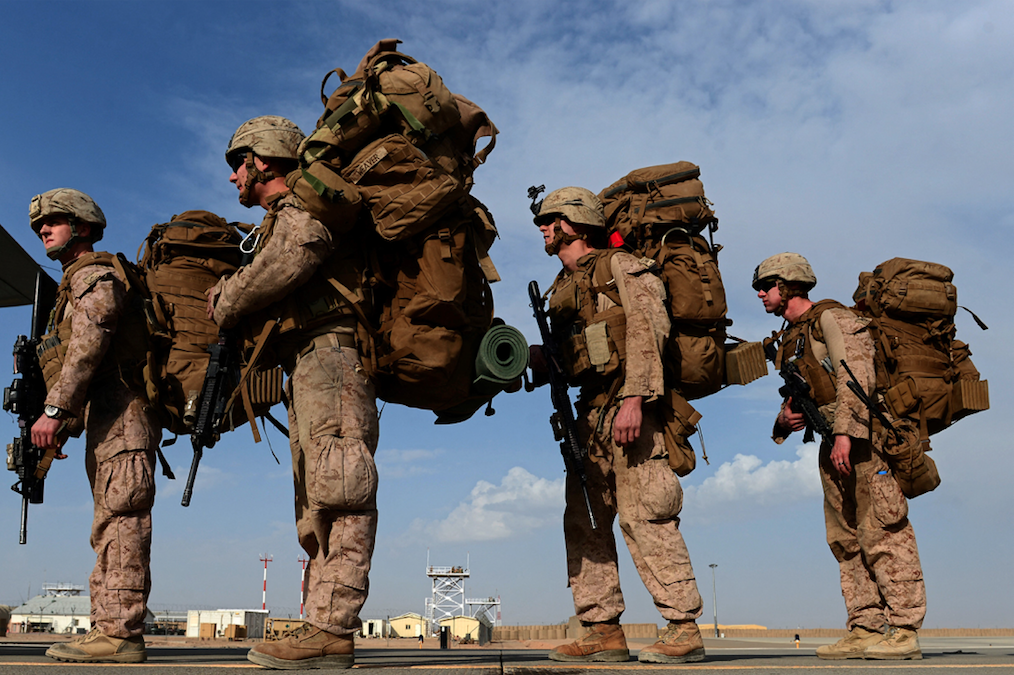Almost all modern American military intervention has ended in decay. It’s hard to find an exception since the Korean War. In the 1960s and the first half of the 1970s, the United States would fight in Indochina – Vietnam, Laos, Cambodia – only to retreat in defeat, after a decade of absurd carnage. Democratic President Lyndon B. Johnson and his Republican successor Richard Nixon share the responsibility.
In the same years globally, the United States will install dictators in Latin America and several parts of Africa, with dire consequences in the decades to follow. Think of the Mobutu dictatorship in the Democratic Republic of the Congo, after the assassination – supported by the CIA – of Patrice Lumumba in early 1961, or the murderous military junta of General Augusto Pinochet in Chile, after the overthrow – here again fomented by the United States – by Salvador Allende in 1973.
In the 1980s, Ronald Reagan’s United States devastated Central America in proxy wars designed to sabotage or overthrow left-wing governments. To this day, the region has still not recovered.
Since 1979, the Middle East and West Asia have suffered the violence of a misguided and cruel US foreign policy. The war in Afghanistan began 42 years ago, in 1979, when the administration of President Jimmy Carter decided to secretly support Islamist jihadists in their struggle against a Soviet-backed regime. Soon, the CIA-backed Mujahedin would help provoke a Soviet invasion, and trap the USSR in a grueling conflict, while plunging Afghanistan into what would become a four-decade spiral of violence and bloodshed.
Across the region, US foreign policy will engender growing disorder. In reaction to the overthrow of the Shah of Iran (another dictator installed by the United States) in 1979, the Reagan administration will arm Iraqi dictator Saddam Hussein in his war against a nascent Islamic Republic of Iran. Bloodbaths and US-backed chemical wars will ensue. This bloody episode will be followed by the invasion of Kuwait by Saddam, then by two Gulf wars led by America, in 1990 and 2003.
The final phase of the Afghan tragedy will begin in 2001. Barely a month after the terrorist attacks of September 11, 2001, President George W. Bush orders a US-led invasion aimed at overthrowing the Islamist jihadists previously supported by the ‘America. His Democratic successor, President Barack Obama, will not only continue the war by deploying more troops, but will also order the CIA to work with Saudi Arabia to overthrow Syrian President Bashar al-Assad, which will lead to a vicious war. Syrian civilians still relevant today. As if that were not enough, Obama will order NATO to oust Libyan leader Muammar Gaddafi, causing a decade of instability in that country and neighboring territories (including in a Mali destabilized by the influx of fighters and weapons from Libya).
What these different episodes have in common is not just a political failure. All of them are tied to a belief in the US foreign policy establishment that the solution to every political challenge lies in military intervention or a CIA-backed move towards destabilization.
This conviction speaks volumes about the ignorance of the US foreign policy elite about the desire of other countries to escape grueling poverty. Most of the US military and CIA interventions took place in countries struggling to overcome severe economic hardship. However, rather than allay the suffering and win the support of the local population, the United States has a habit of bombing the few infrastructures that the country has, while leading educated professionals to flee it to stay alive. .
Even a quick glance at US spending in Afghanistan reveals how stupid US policy is there. According to a recent report of the Special Inspector General for the Reconstruction of Afghanistan, the United States invested approximately $ 946 billion between 2001 and 2021. However, these expenditures of nearly $ 1,000 billion did not make it possible to rally America only a small number of hearts and minds.
Explanation for this, of these $ 946 billion, no less than $ 816 billion, or 86%, were allocated to American troops. The Afghan population received only a tiny fraction of the remaining $ 130 billion, with $ 83 billion going to the Afghan security forces. Another approximately $ 10 billion was spent on drug control operations, and $ 15 billion benefited US agencies operating in Afghanistan. All of this left only $ 21 billion in “economic support”. And yet, the major part of this amount escaped the development approaches on the ground, the programs having as a habit to “support the fight against terrorism, to revitalize the national economies, as well as to contribute to the development of judicial systems. efficient, accessible and independent ”.
In summary, less – and probably much less – than 2% of US spending in Afghanistan has benefited the Afghan people in the form of essential infrastructure or poverty alleviation services. The United States could have invested in clean water and sanitation, the construction of schools and clinics, digital connectivity, agricultural equipment and expansion, nutrition programs, and many other measures enabling to the country to overcome its economic difficulties. Instead, the United States leave behind a country in which the life expectancy is 63 years, the maternal mortality rate at 638 per 100,000 births, and the infant malnutrition rate at 38%.
The United States should never have intervened militarily in Afghanistan – neither in 1979, nor 2001, nor for the 20 years since. Once there, America could and should have promoted a more stable and prosperous Afghanistan, investing in maternal health, education, clean water, nutrition, and other essential services. These human investments – in particular financed alongside other countries through institutions such as the Asian Development Bank – would have helped to put an end to the bloodshed in Afghanistan as in other poor regions, thus preventing future wars.
However, American leaders keep explaining to their people that they do not intend to waste money on such trivialities. The sad reality is that the American political class and the mass media view the populations of poor nations with condescension, even as they constantly and recklessly intervene in those countries. Of course, most of the elite in the United States view America’s own poor people with this same contempt.
In the aftermath of the fall of Kabul, and as one would expect, the American mass media explained the US failure in Afghanistan to irremediable corruption in the country. America’s lack of self-awareness is astounding. No wonder that after several trillions spent in the wars in Iraq, Syria, Libya and elsewhere, the efforts of the United States result in nothing but blood on the sand.
Translated from English by Martin Morel
Jeffrey D. Sachs, professor at Columbia University, is director of the Columbia University Center for Sustainable Development, and chair of the United Nations Sustainable Development Solutions Network.
© Project Syndicate 1995–2021
– .

